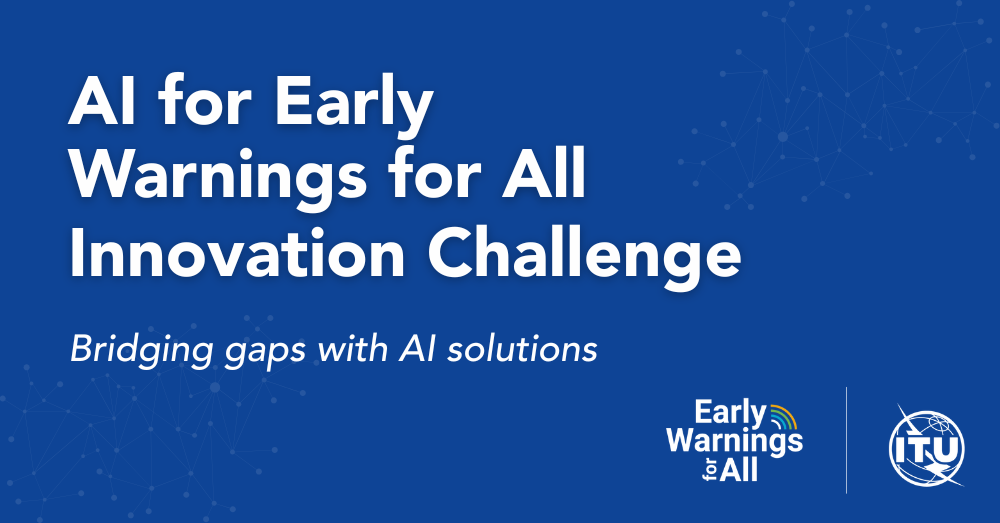
Four teams have been selected as the finalists for the AI for EW4All Innovation Challenge. The winning teams have presented their cutting-edge, AI-powered solutions that help bridge the gaps in early warnings at the
AI Innovation for EW4All Workshop on 9 July 2025, which took place as part of the AI for Good Global Summit 2025. The submission of solutions ran from 12 to 26 May 2025, and the evaluation of submissions was conducted immediately after the submission period. The evaluation was performed by the
AI Subgroup of Early Warnings for All Initiative, and officially concluded on 1 July 2025.
All the finalists who made it to the the top 10 are expected to present their work under the Solutions Spotlight at future AI Subgroup of EW4All meetings (exact dates to be announced later). The jury were directly in contact with all the selected teams.
About the selected teams:
Team Bibliotechies
"A decision-centered AI platform designed to support anticipatory flood action, helping governments and responders act early and save lives."
Team Bibliotechies propose to develop a decision-centered Al platform that integrates hazard forecasts with real-time scenario simulations to support anticipatory humanitarian response. The system models not only what will happen, but also what could happen under different intervention pathways-helping responders test "what-if' scenarios for actions like evacuation, cash transfers, or mobile team deployment.
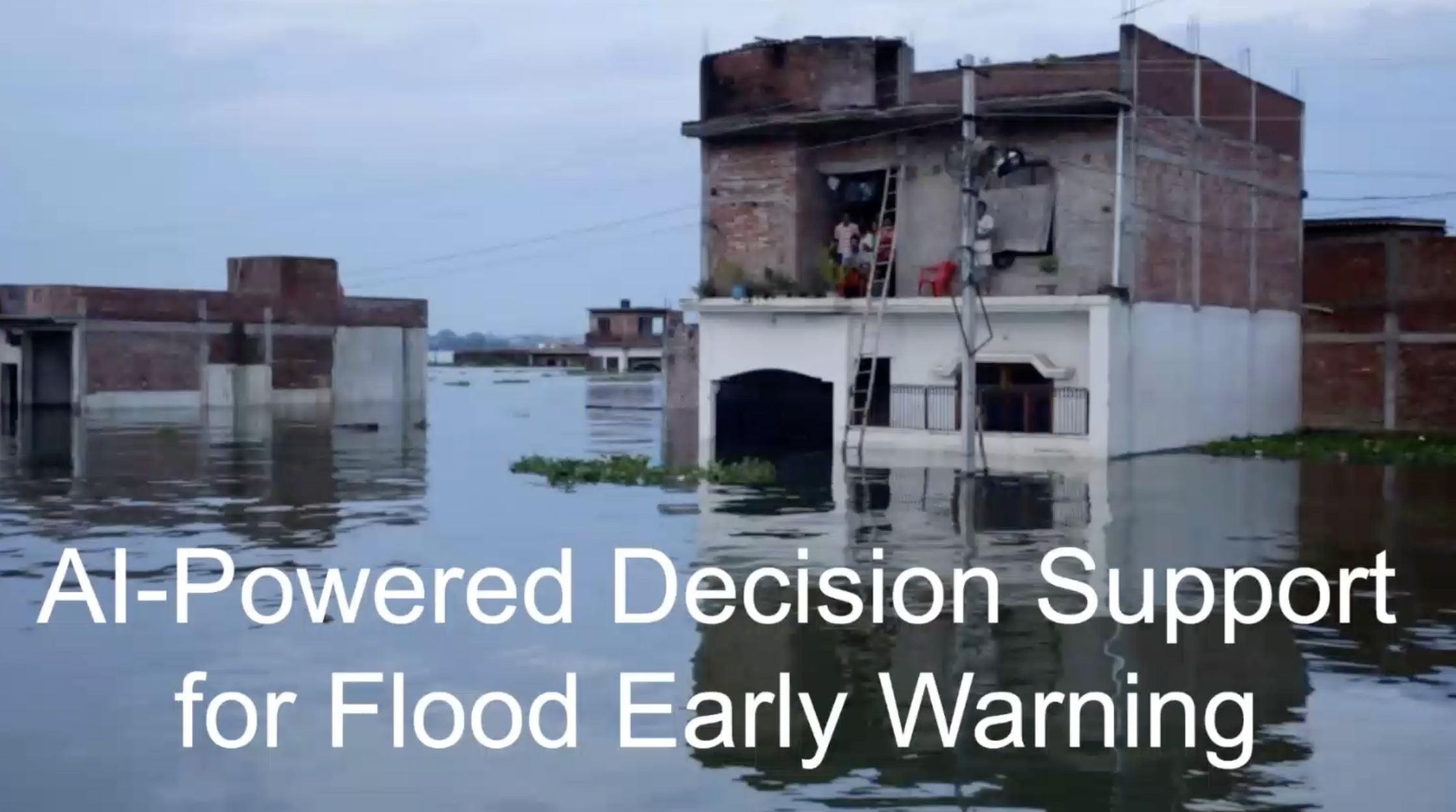 Download the slides here.
| Ms Erika Gutierrez, Artificial Intelligence and Mapping Specialist, UNOSAT
Ms Margherita Philipp, Data Scientist, EconAI research group, Fundació d'Economia Analítica (FEA)
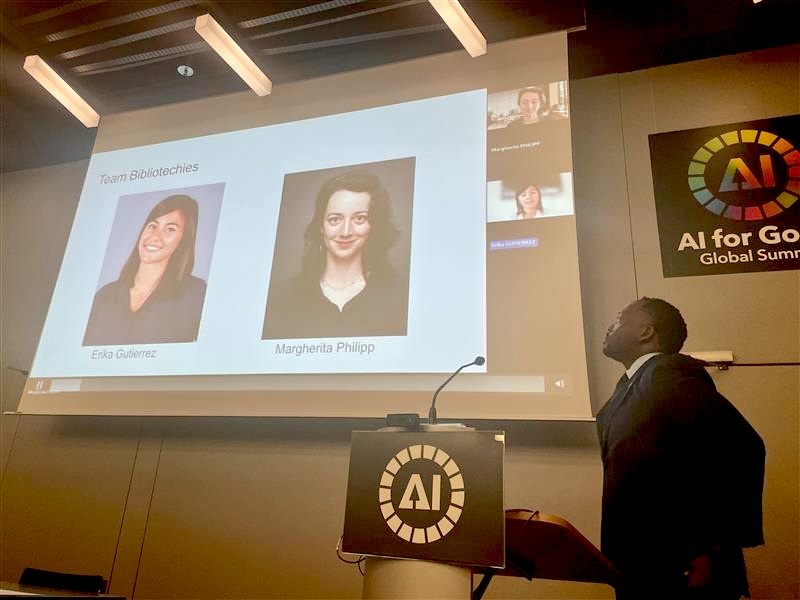
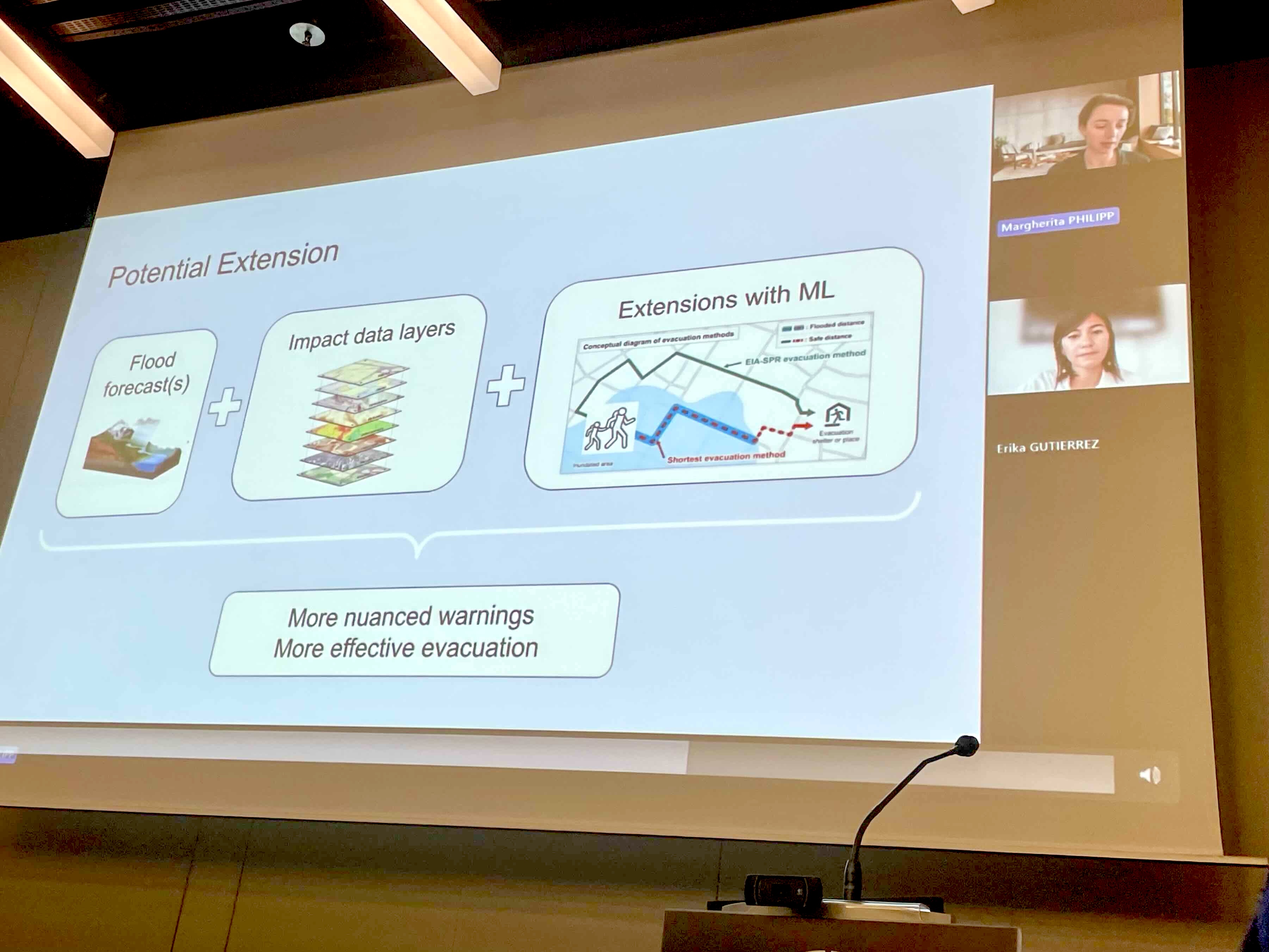
|
Team DARAJA
"A generative AI-powered early warning service tailored for Sudan, piloting inclusive communication tools that bridge information gaps in emergencies."
Team Daraja focuses on the use of AI to support the dissemination and communication of extreme weather early warnings to communities in the conflict zone of Sudan. It tackles issues of language and literacy barriers across 11 Sudanese states, the need for the rapid, predictable creation of relevant, actionable forecast and early warning information customised to geographic and demographic groups across Sudan, a nation in conflict and in famine, where there is endemic vulnerability. These aspects are important in light of the inadequate human resources, poor communication skills and time constraints of the Sudanese Meteorological Agency.
 Download the slides here.
| Ms Esraa Elgadi, Project Manager, Resurgence
Ms Omnia Shawkat, Founder, Andariya
Ms Dilupa Nanayakkara, Communications and Marketing Lead, Resurgence
Mr Scott Williams, Disaster Risk Management Expert & Resurgence Board Member
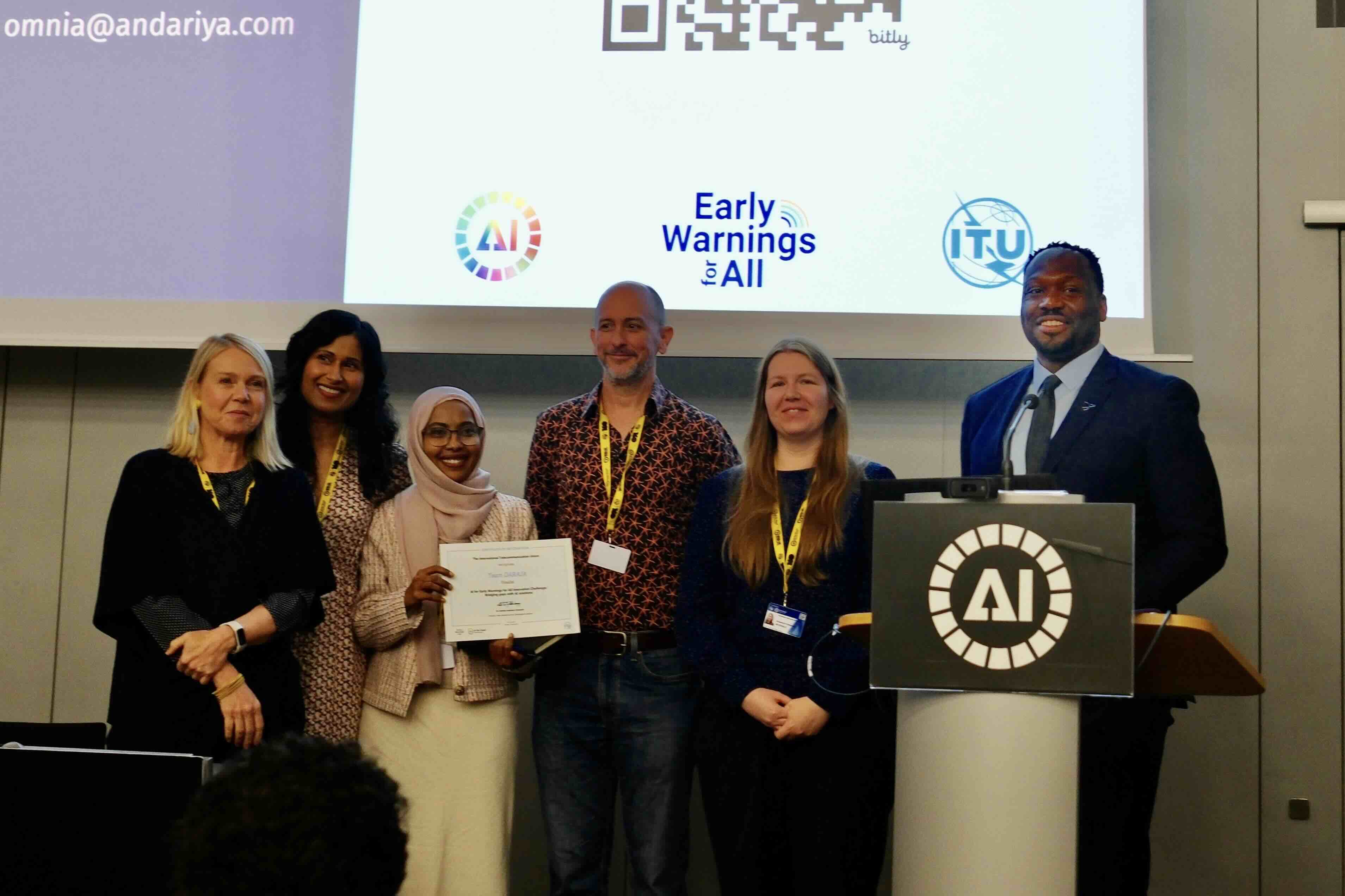
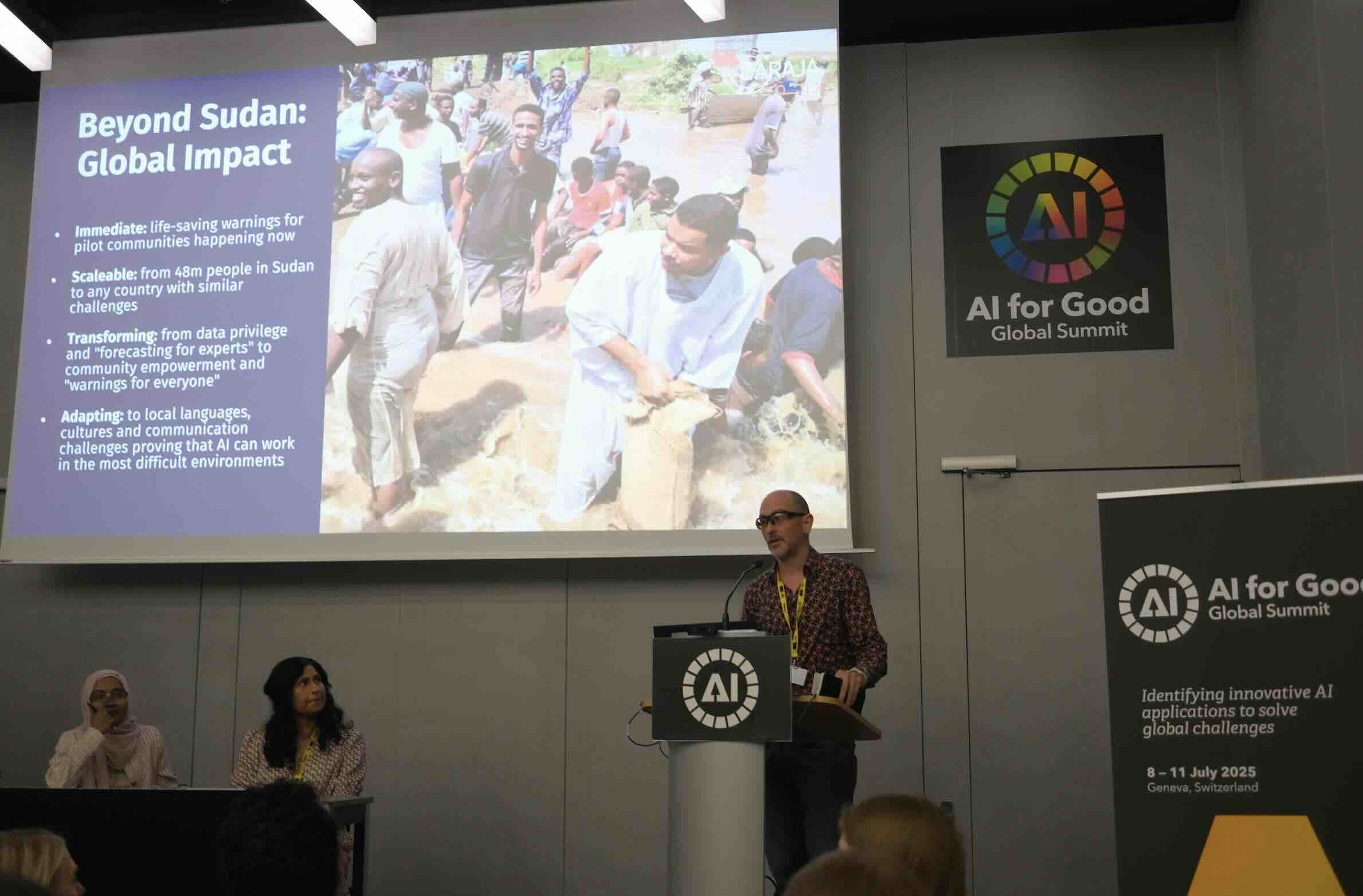
|
Team Ignitia
"An AI-driven system delivering localized warnings to climate-vulnerable communities, particularly those underserved by traditional forecasting models."
Team Ignitia has developed an Al-driven nowcasting model that acts as a virtual radar, delivering hyper-local storm alerts with up to 3-hour lead times, even in areas without ground weather infrastructure. The system fuses high-resolution remote sensing and ensemble forecast data with deep learning, generating probabilistic impact predictions faster than conventional radar systems. Operating every 5-10 minutes, alerts are disseminated via WhatsApp, IVR, SMS, and radio in local languages using LLM-enhanced content designed for low-literacy, low-connectivity environments. This enables both improved forecasting and real-time, last-mile dissemination, bridging the preparedness divide.
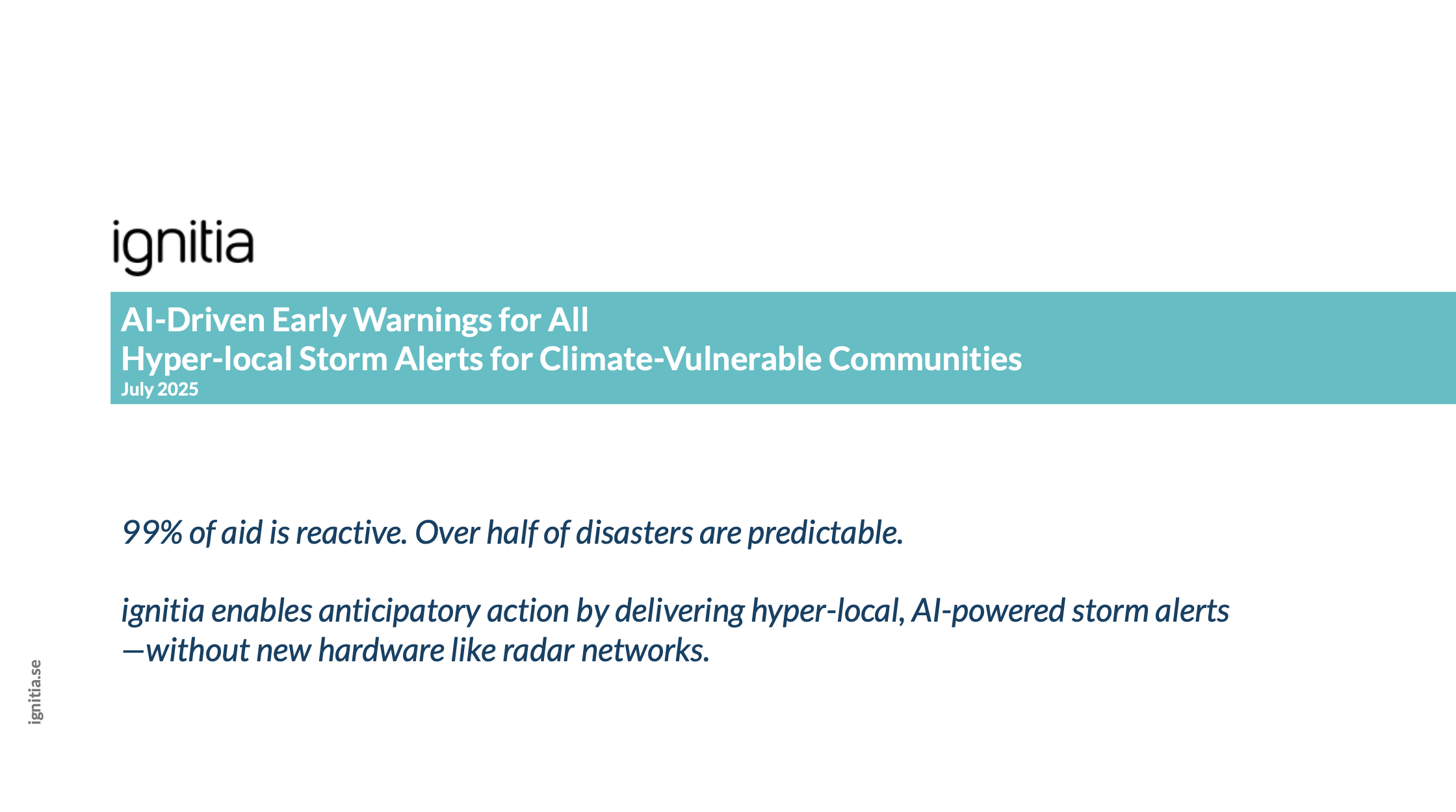 Download the slides here.
| Dr Andreas Vallgren, Co-founder and Chief Science Officer, Ignitia
Ms Theresa Fehle, Strategic Partnership Manager, Ignitia
Mr Francesco Carnielli, Technical Director, Ignitia
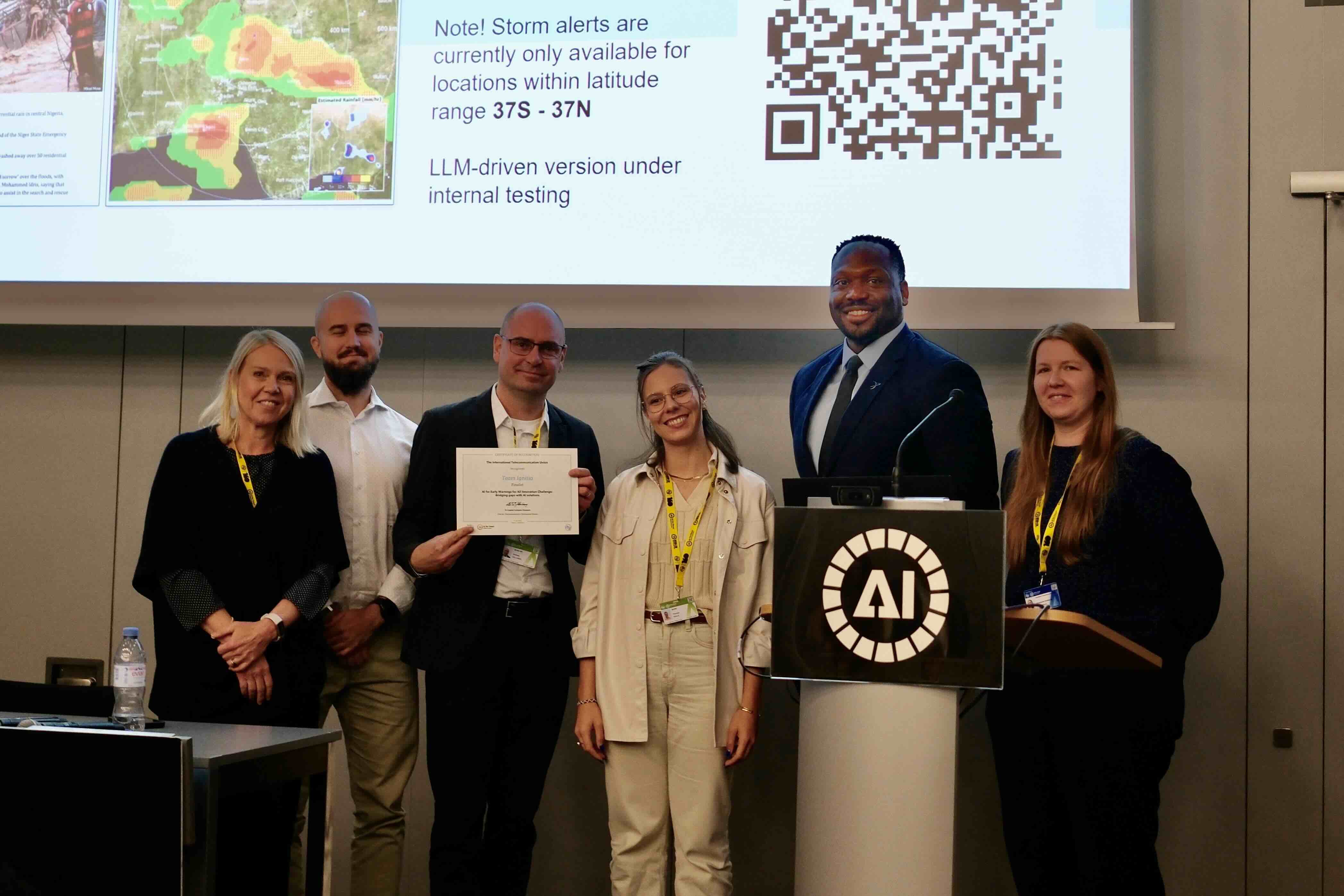
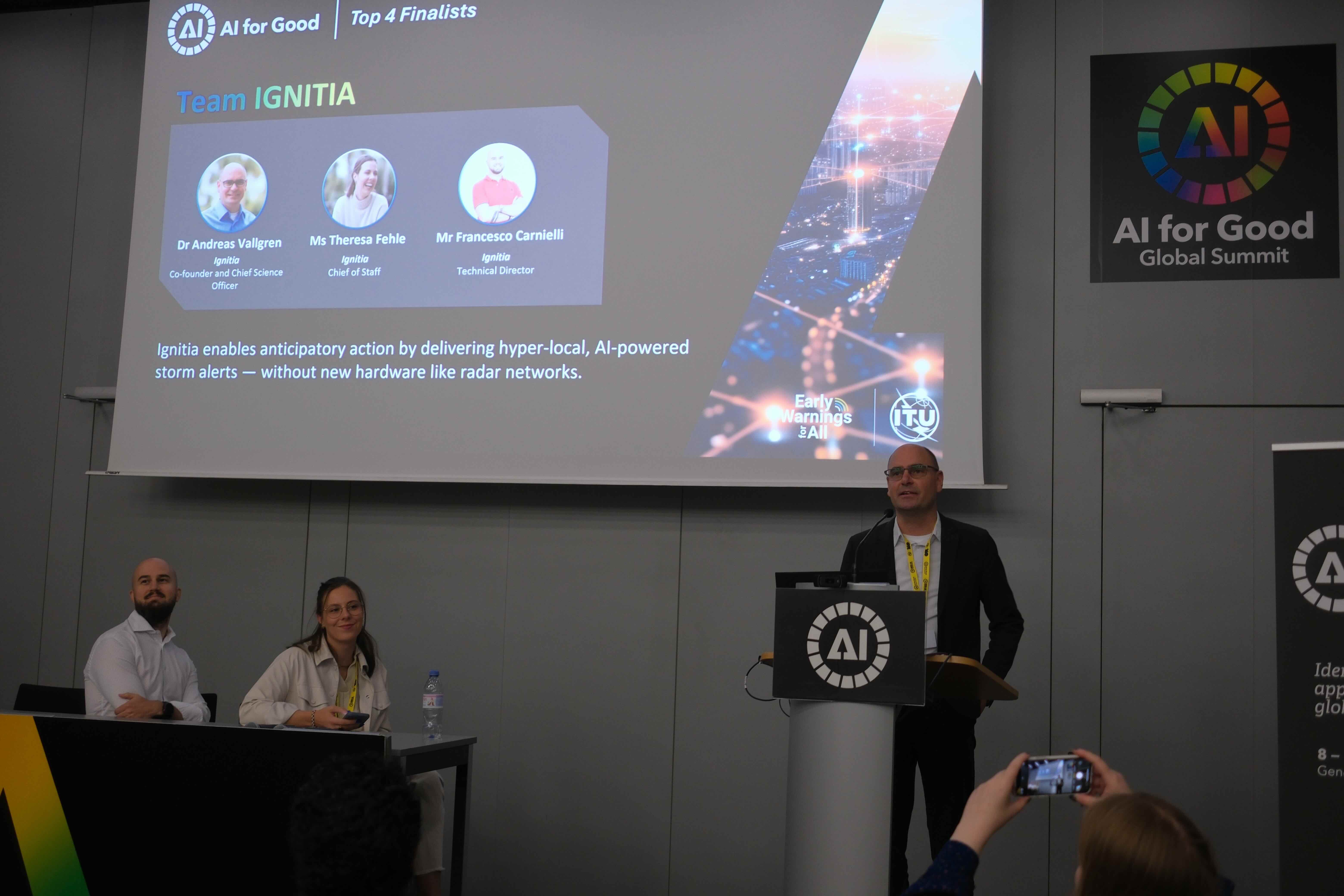
|
Team DESTSAJ
"A solution that combines AI and the Common Alerting Protocol (CAP) to ensure that early warnings are inclusive, accessible, and effectively delivered to all in Bangladesh."
Team Destaj addresses the societal impacts of AI in early warning by developing an AI-powered dissemination system based on the Common Alerting Protocol (CAP). Their solution targets Bangladesh, where technical language and limited accessibility often hinder the effectiveness of hydrometeorological warnings. By automating the translation of early warnings into simplified, locally relevant formats including indigenous languages, voice messages, and sign language the team aims to ensure inclusive communication for marginalized populations.
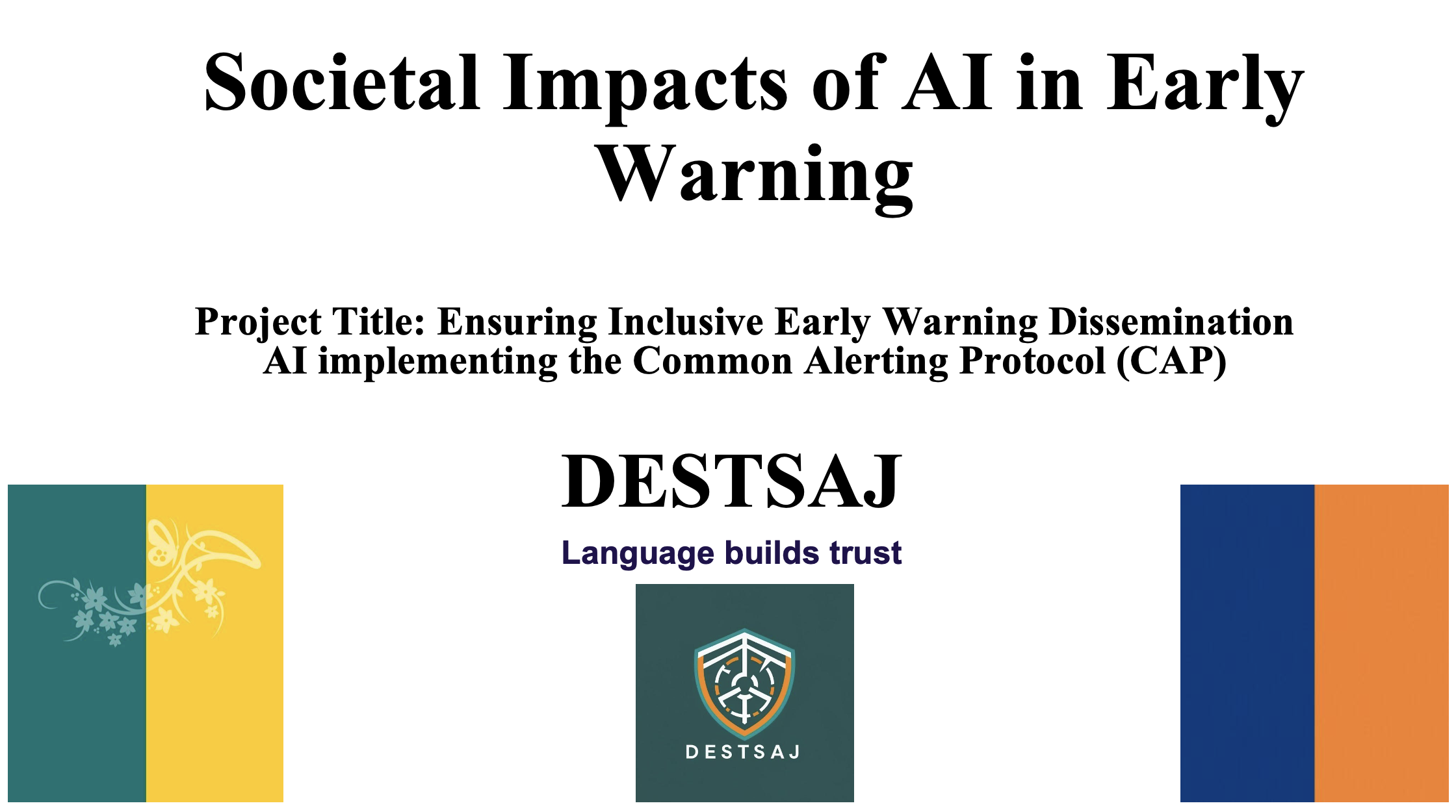 Download the slides here.
| Dr Shamima Ferdousi Sifa, Assistance Professor and Climate Resilience Expert, University of Dhaka
Md Asif Rafsan, DRR and EWS Expert
Mr Tonoy Mahmud, Geospatial Expert, University of Dhaka
Mr M Maruf Alam James, Large Language Model Specialist, University of Dhaka
Ms Saiyeba Zaman, Community Coordinator, University of Dhaka
Ms Sadia Afrin Sayfa Negaban, Meteorologist, University of Dhaka
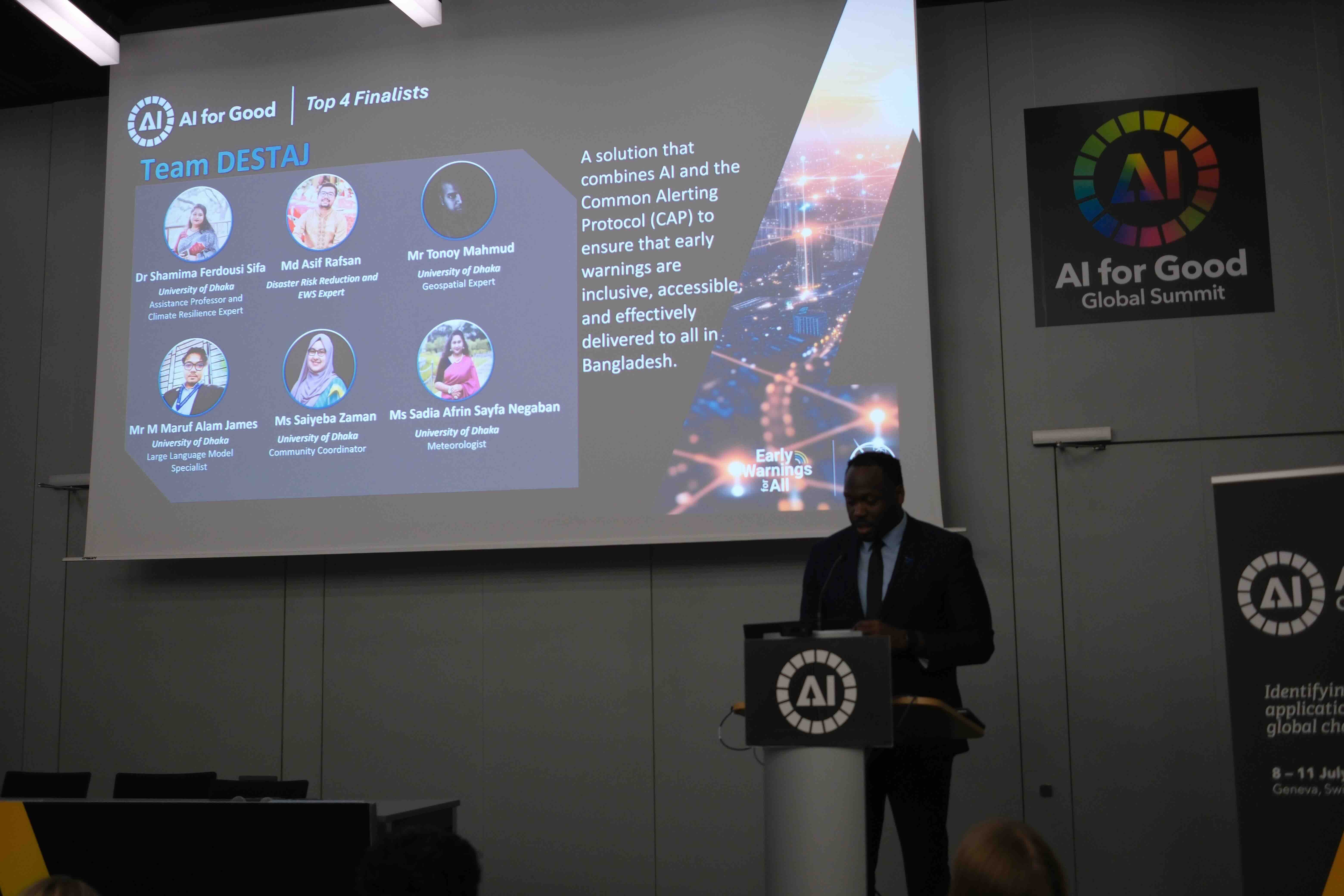

|
About the AI for EW4All Innovation Challenge:
Organized by the AI Subgroup of Early Warnings for All Initiative, the AI for Early Warnings for All Innovation Challenge: Bridging gaps with AI solutions is a global hackathon designed to harness the power of AI to address critical gaps in early warning systems (EWS) for disasters and extreme weather events. The submissions received included solutions that innovate on the areas of 1) AI for Data Gaps, 2) AI for Forecasting and Impact-Based Prediction, 3) Societal Impacts of AI in Early Warning, and 4) Emergency Preparedness, Anticipatory Action and Resource Optimization. These were evaluated by the jury composed of members of the AI Sub-Group of Early Warnings for All initiative against the following criteria:
-
Relevance to EW4All pillars: The AI solution should address specific gaps identified within the four pillars of the EW4All initiative.
- Innovation and scalability: Creative use of AI to solve problems in a scalable and cost-effective manner.
- Feasibility: Technical and operational feasibility of the solution within the context of early warning systems.
- Impact potential: Potential of the AI solution to significantly improve early warning capabilities in disaster-prone regions.
- Collaboration potential: Ability to engage stakeholders and partners for further development and deployment.